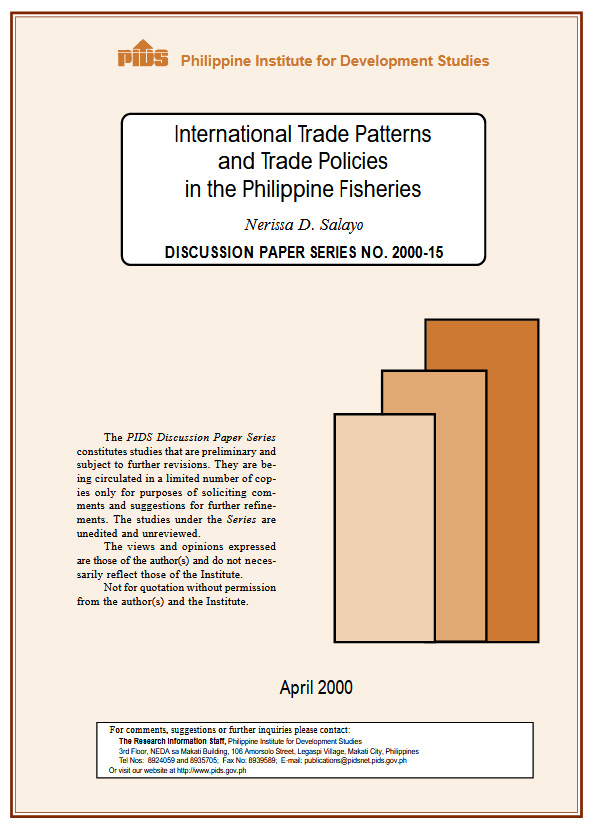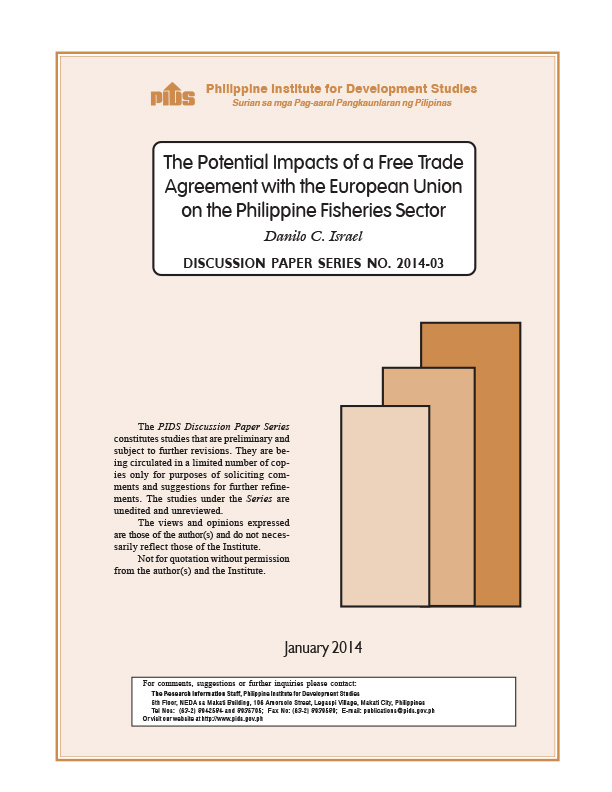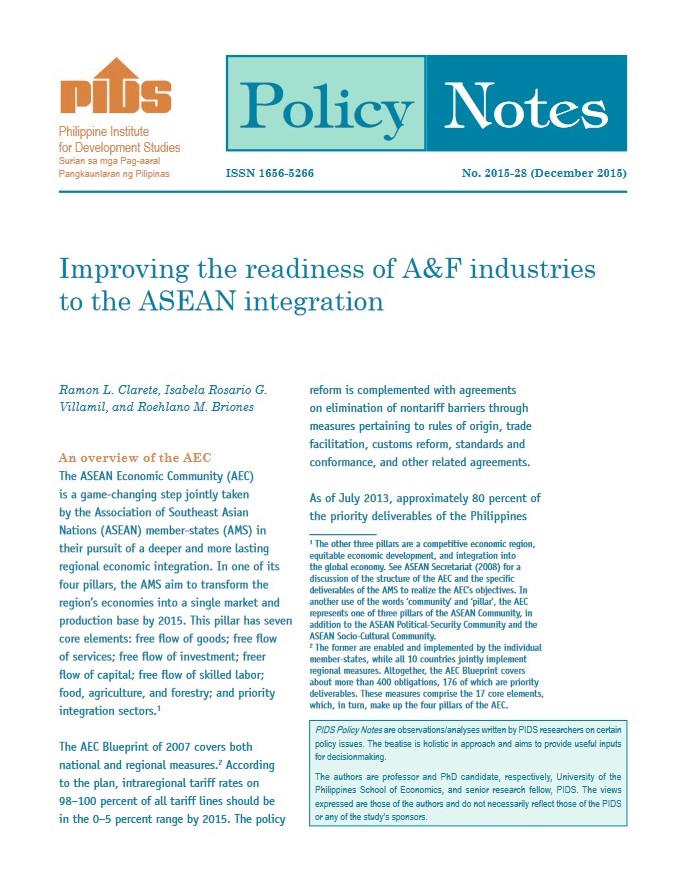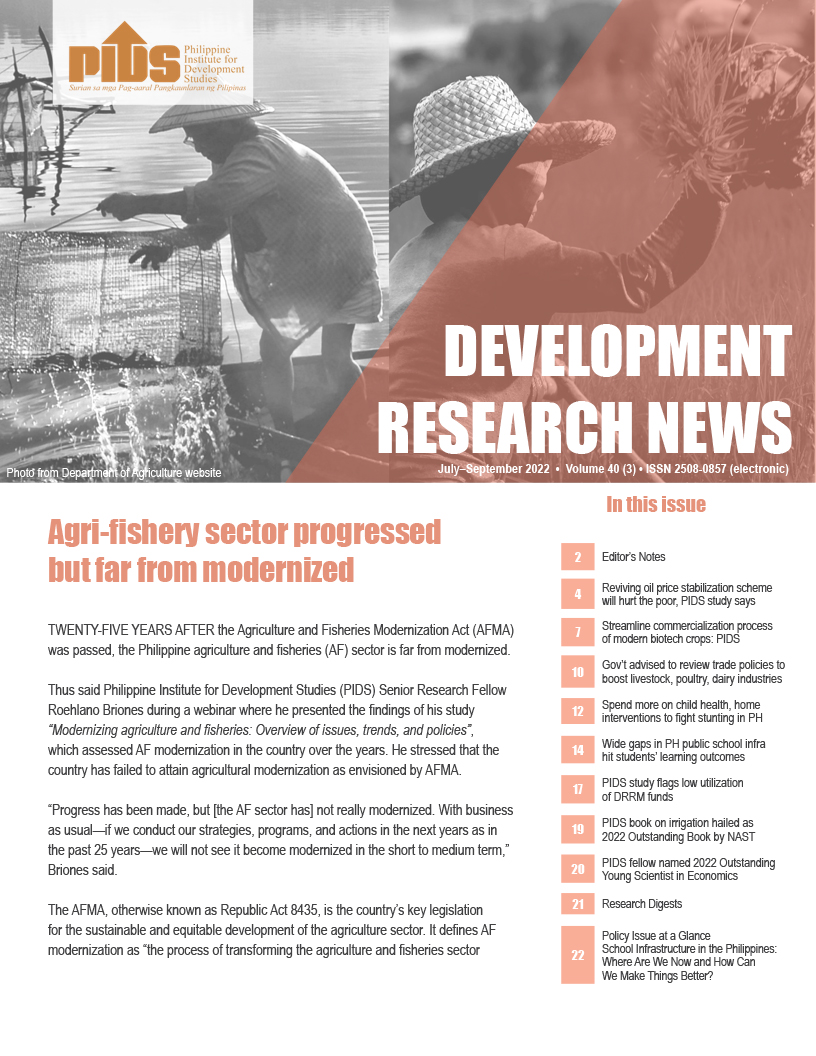The Philippines is as a net exporter of fish and products while negative trade balance prevails in other land-based production systems, such as agriculture and forestry. The balance of trade in fisheries remains positive but at a declining value. Using time series and cross-section data from 1970 to 1998, this paper derived the indexes of trade balance, quantity, total value and average unit prices of traded fish commodities to determine trade patterns. The analysis used some coefficients, such as market shares, propensity to export, import reliance and revealed comparative advantage to evaluate trade performance over time. Results consistently showed the Philippines’ advantage and potential from continued efforts in exporting value-added products, such as various preparations of fish, crustaceans and mollusks. There are some lessons to recall, such as on how the improvement in the trade balance was achieved in 1994. In contrast, urgent analysis is needed to rebound from the declining performance of the fresh and frozen forms of fish and crustacean in the international market. The domestic trade regulations, policies and recent fishery-related issues in the World Trade Organization (WTO) point to the need for the Philippines to orchestrate its position on some alleged conflicting policies. The paper ends with the list of research gaps and suggested topics in fisheries trade.













